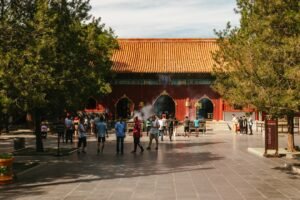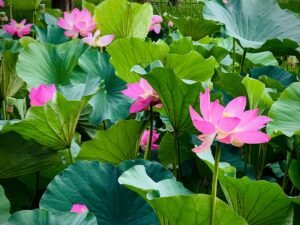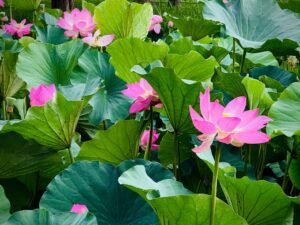

Your First Chinese Idiom: How to Use a Chéngyǔ Correctly
Chéngyǔ, the four-character idiomatic expressions in the Chinese language, are a fascinating aspect of Chinese culture and linguistics. These concise phrases encapsulate profound meanings, often derived from historical tales, classical literature, or philosophical teachings. The beauty of chéngyǔ lies not only in their brevity but also in their ability to convey complex ideas and emotions succinctly.
For learners of the Chinese language, understanding and using chéngyǔ can significantly enhance their fluency and cultural appreciation. As one delves into the world of chéngyǔ, it becomes evident that these expressions are more than mere linguistic tools; they are windows into the rich tapestry of Chinese history and thought. Each chéngyǔ carries with it a story or moral lesson, making them an essential component of effective communication in Mandarin.
For those embarking on the journey of learning Chinese, mastering chéngyǔ can provide a deeper connection to the language and its speakers. Start learning Chinese at the NLS Norwegian Language School in Oslo now!
Table of Contents
ToggleSummary
- Chéngyǔ are traditional Chinese idiomatic expressions that carry deep cultural and historical significance.
- Understanding the meaning of Chéngyǔ requires knowledge of Chinese culture, history, and language nuances.
- Chéngyǔ can be used in everyday conversations to add depth and richness to communication.
- Incorporating Chéngyǔ into writing can enhance the literary quality and cultural authenticity of the text.
- Recognising common Chéngyǔ in Chinese culture is essential for gaining insight into the values and beliefs of the society.
Understanding the Meaning of Chéngyǔ
The literal translation of chéngyǔ is “set phrases” or “fixed expressions,” but their significance extends far beyond this simple definition. Each chéngyǔ is typically composed of four characters, and they often encapsulate a complete thought or idea. The meanings of these phrases can be quite nuanced, often requiring an understanding of the cultural context from which they originate.
For instance, the chéngyǔ “画蛇添足” (huà shé tiān zú), which translates to “drawing a snake and adding feet,” conveys the idea of ruining something by overdoing it. Understanding chéngyǔ involves not only grasping their literal meanings but also appreciating the historical or literary references that inform them. Many chéngyǔ are derived from ancient texts or folklore, making them rich in cultural significance.
This depth of meaning is what makes chéngyǔ so appealing to language learners; they serve as a bridge connecting the language to its cultural roots.
Using Chéngyǔ in Everyday Conversations

Incorporating chéngyǔ into everyday conversations can elevate one’s language skills and make interactions more engaging. Native speakers often use these idiomatic expressions to convey thoughts succinctly and with flair. For example, when discussing a situation where someone has overcomplicated a task, one might say “画蛇添足,” instantly communicating the idea without lengthy explanations.
This not only saves time but also demonstrates a level of fluency that is appreciated by native speakers. However, using chéngyǔ effectively requires an understanding of the appropriate contexts in which they can be employed. Some chéngyǔ may be more suitable for formal situations, while others might be better suited for casual conversations among friends.
As learners become more familiar with these expressions, they will find themselves able to navigate various social settings with greater ease and confidence.
Incorporating Chéngyǔ into Writing
Chéngyǔ can also play a significant role in enhancing written communication in Chinese. Whether one is crafting essays, reports, or creative pieces, the inclusion of these idiomatic expressions can add depth and sophistication to the writing. For instance, using chéngyǔ in academic writing can demonstrate a strong command of the language and an understanding of cultural nuances, which can impress readers and evaluators alike.
Moreover, chéngyǔ can serve as effective tools for summarising complex ideas or arguments succinctly. By employing these expressions, writers can convey their points more powerfully and memorably. However, it is essential to use them judiciously; overusing chéngyǔ can lead to confusion or detract from the clarity of the writing.
Striking a balance between idiomatic expressions and straightforward language is key to effective communication.
Recognising Common Chéngyǔ in Chinese Culture
To fully appreciate chéngyǔ, one must recognise their prevalence in Chinese culture. These expressions are not only used in everyday conversation but also appear frequently in literature, film, and even popular media. Many chéngyǔ have become ingrained in the collective consciousness of Chinese society, often used to express shared values or cultural ideals.
For instance, the chéngyǔ “一石二鸟” (yī shí èr niǎo), meaning “to kill two birds with one stone,” reflects a pragmatic approach to problem-solving that resonates with many Chinese people. Recognising such expressions allows learners to engage more deeply with Chinese culture and understand the values that underpin it. Furthermore, it opens up avenues for discussions about cultural differences and similarities, enriching the language learning experience.
Memorising Chéngyǔ for Language Learning

Memorising chéngyǔ can be a rewarding yet challenging aspect of learning Chinese. Given their concise nature, these expressions often require learners to commit them to memory along with their meanings and appropriate contexts for use. One effective strategy for memorisation is to associate each chéngyǔ with its story or origin; this not only aids recall but also deepens understanding.
Flashcards can be a useful tool for memorising chéngyǔ, allowing learners to test themselves on both the characters and their meanings. Additionally, incorporating these expressions into daily practice—whether through speaking with native speakers or writing exercises—can reinforce memory retention. As learners become more comfortable with chéngyǔ, they will find that these phrases become second nature in their language use.
Avoiding Common Mistakes when Using Chéngyǔ
While chéngyǔ can enhance communication, they can also lead to misunderstandings if used incorrectly. One common mistake among learners is using a chéngyǔ without fully understanding its meaning or context. This can result in awkward or inappropriate usage that may confuse native speakers or detract from the intended message.
Another pitfall is attempting to translate chéngyǔ directly into other languages. The unique cultural connotations embedded within these expressions often do not have direct equivalents in other languages, leading to misinterpretations. To avoid such mistakes, learners should take the time to study each chéngyǔ thoroughly and seek guidance from native speakers or experienced teachers when in doubt.
Adapting Chéngyǔ for Different Situations
Adapting chéngyǔ for different situations is an essential skill for effective communication in Chinese. While some expressions may be universally applicable, others may be more suited to specific contexts or audiences. For instance, certain chéngyǔ may carry formal connotations that make them appropriate for business settings but less suitable for casual conversations among friends.
Learners should also be mindful of regional variations in the use of chéngyǔ. Different areas may have their own preferred expressions or interpretations of certain phrases. Being adaptable and open to learning about these nuances will enhance one’s ability to communicate effectively across various social contexts.
Exploring the Origins of Chéngyǔ
The origins of chéngyǔ are often steeped in history and literature, providing a fascinating glimpse into Chinese culture. Many chéngyǔ trace their roots back to ancient texts such as “The Analects” by Confucius or historical tales from dynastic periods. Understanding these origins not only enriches one’s knowledge of the language but also fosters a deeper appreciation for the cultural heritage that informs it.
Exploring the stories behind specific chéngyǔ can also serve as an engaging way to learn about Chinese history and philosophy. For example, the expression “亡羊补牢” (wáng yáng bǔ láo), meaning “to mend the fold after losing sheep,” originates from a fable about taking corrective action after making a mistake. Such narratives provide valuable lessons that resonate beyond language learning, offering insights into human behaviour and decision-making.
Embracing Chéngyǔ as a Cultural Experience
Embracing chéngyǔ as part of one’s language learning journey is not just about mastering idiomatic expressions; it is about immersing oneself in a rich cultural experience. Engaging with these phrases allows learners to connect with native speakers on a deeper level and fosters mutual understanding across cultures. The use of chéngyǔ can serve as a bridge between different backgrounds, facilitating meaningful conversations that transcend linguistic barriers.
Moreover, participating in cultural activities that highlight chéngyǔ—such as poetry readings, storytelling sessions, or even theatre performances—can further enhance one’s appreciation for these expressions. Such experiences provide opportunities to see how chéngyǔ are woven into the fabric of daily life and artistic expression in China.
Embracing Chéngyǔ in Language Learning
In conclusion, embracing chéngyǔ as part of one’s language learning journey offers numerous benefits that extend beyond mere vocabulary acquisition. These four-character idiomatic expressions enrich communication by conveying complex ideas succinctly while providing insights into Chinese culture and history. By understanding their meanings, using them appropriately in conversation and writing, and recognising their cultural significance, learners can elevate their proficiency in Mandarin.
For those interested in furthering their understanding of Chinese language and culture, courses at institutions like the NLS Norwegian Language School in Oslo offer an excellent opportunity to explore these aspects in depth. With dedicated instruction on chéngyǔ and other elements of Mandarin, students can immerse themselves in a comprehensive learning experience that fosters both linguistic skills and cultural appreciation. Embracing chéngyǔ not only enhances language proficiency but also enriches one’s journey through the vibrant world of Chinese culture.
Register for a Chinese class at the NLS Norwegian Language School now!
If you want to learn Norwegian, you can register for classes here. We look forward to hearing from you and helping you become fluent in Norwegian.





